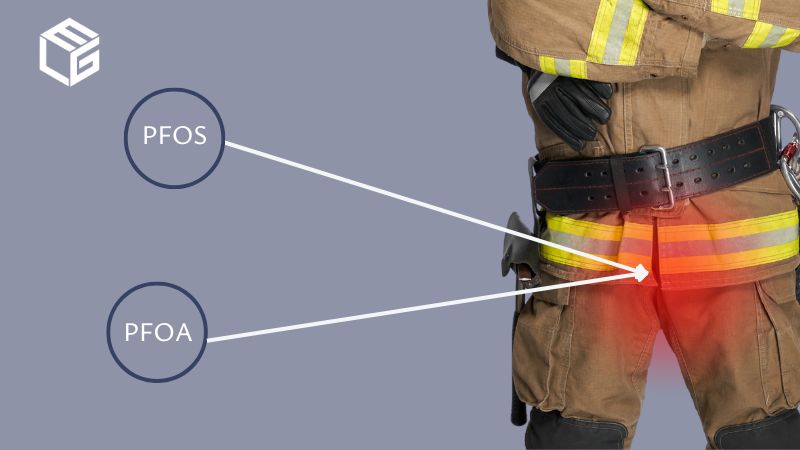The chemical PFOA was found to have the strongest connection with testicular cancer
Given their chemical properties and biological effects, plausible concerns about PFAS exposure causing cancer are growing.
These manufactured chemicals don't break down in the environment and can accumulate in animals and humans.
People are exposed to PFAS through soil, and outdoor air near industrial areas with PFAS manufacturing, disposal, or use.
Recent studies have shown that PFAS can mimic human hormones including thyroid, estrogen, and testosterone.
A proven connection between PFOA & PFOS and testicular cancer diagnosis
With regards to the evidence of exposure to PFAS and cancer, there are a relevant number of studies that investigated the potential carcinogenicity of perfluoroalkyls in communities living near facilities releasing PFAS chemicals. Here are some noteworthy facts:
- About 98% of Americans have detectable levels of PFAS in their blood. Children have elevated serum PFAS concentrations compared to adults.
- Experts suspect that exposure while in the womb might explain why testicular cancer is a prototypic tumor of young adults.
- Experts are fairly certain there must be an environmental cause because the rate of cancer has increased so rapidly.
- A study, published by the Journal of Clinical Endocrinology and Metabolism, found that young men exposed to high levels of PFAS over long periods of time experience a number of different problems with their reproductive systems, such as lower testosterone activity resulting in smaller genitalia and lower sperm counts.
Who can be harmed by the fire suppressant AFFF?
Individuals at greatest risk of harm from AFFF, are those who manufacture the foam, firefighters who use it, and Air Force personnel who have direct chemical exposure.
The core problem with AFFF consists in perfluorooctane sulfonic acid (PFOS) and perfluorooctanoic acid (PFOA).
Of particular concern, is the multi-faceted exposure firefighters have to toxins directly from firefighting foams, from the gear they wear. Ironically, the most dangerous thing about an occupation that involves running into a fire isn't the flames, but the exposure to synthetic chemicals such as PFOS and PFOA used in firefighting foams. Firefighters who reported that they were exposed on the job, usually performed inspections to minimize fire dangers, responded to hazardous materials spills, and assisted civilian fire departments when needed.
PFAS-contaminated soil on military bases
All branches of our armed forces have been using AFFF fire suppressant foam that contains the hazardous chemicals PFOS and PFOA since the early '70s.
In addition to industrial chemicals used by active producers and placed in lakes and rivers or disposed of in landfills, ongoing sources of PFAS pollution include chemical-based firefighting foam used by:
- Military bases
- Airports
- Fire departments
Thousands of military personnel and their families are suffering from serious illnesses because of exposure to PFOA and PFOS chemicals used for decades in firefighting foam.
Testicular cancer is misdiagnosed in 25% of the patients
Sometimes, men with testicular cancer have no symptoms of the disease. When one or more of the following symptoms occur, consult your doctor right away.
- An abnormal testicle development
- A size difference between the testicles
- Testicular pain or discomfort
- Testicular swelling
- Lower abdominal or back pain
Prospects for successful treatment are good if the disease is diagnosed early, but the effectiveness of treatment diminishes in the event of a testicular cancer misdiagnosis. In the majority of cases, patients will present with concern for a lump or enlargement in either testicle. The lump is painless in at least 90% of patients, and misdiagnosis is very common, as there are other conditions that can present as a lump or swelling in one testicle, such as:
- testicle inflammations or infections
- epididymal cysts
Tools for finding or diagnosing testicular cancer include health records and physical exams, ultrasound of the testicles, and a blood test to check for certain proteins in your blood.
Testicular cancer has a latency of 15 years when it is caused by AFFF exposure, but it can be shorter for aggressive cancer types. If your urologist finds cancer through these exams, you will require blood tests to estimate current PFAS serum levels in order to establish potential links between exposure levels and testicular cancer.

